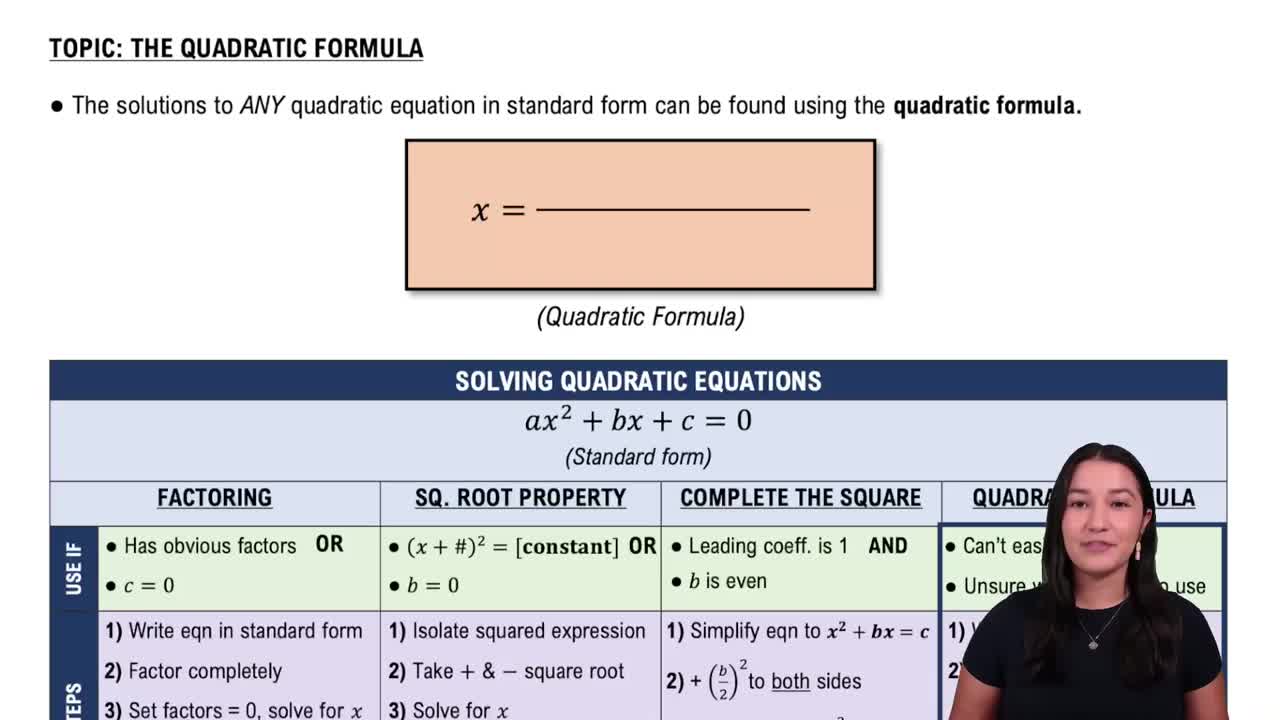Here are the essential concepts you must grasp in order to answer the question correctly.
Quadratic Functions
A quadratic function is a polynomial function of degree two, typically expressed in the form f(x) = ax^2 + bx + c. The graph of a quadratic function is a parabola, which can open upwards or downwards depending on the sign of the coefficient 'a'. Understanding the general shape and properties of parabolas is essential for sketching their graphs.
Recommended video:
Solving Quadratic Equations Using The Quadratic Formula
Vertex and Axis of Symmetry
The vertex of a parabola is the highest or lowest point on its graph, depending on its orientation. The axis of symmetry is a vertical line that passes through the vertex, dividing the parabola into two mirror-image halves. For the function f(x) = - (x + 1)^2 + 4, the vertex can be found directly from the vertex form of the equation, and the axis of symmetry can be expressed as x = h, where (h, k) is the vertex.
Recommended video:
Domain and Range
The domain of a function refers to all possible input values (x-values) for which the function is defined, while the range refers to all possible output values (f(x)-values). For quadratic functions, the domain is typically all real numbers, but the range depends on the vertex's position. In the case of f(x) = - (x + 1)^2 + 4, the range is limited by the maximum value at the vertex.
Recommended video:
Domain & Range of Transformed Functions
 Verified step by step guidance
Verified step by step guidance Verified Solution
Verified Solution



 7:42m
7:42m